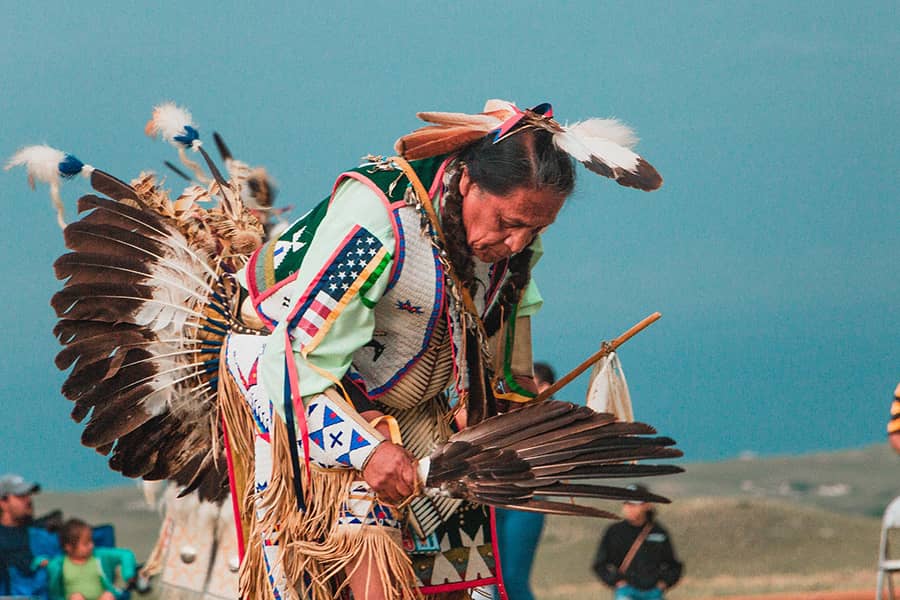Demystifying Cultural Practices: A Comprehensive Overview
April 16, 2023
Cultural practices are the customs, traditions, rituals, and behaviors that shape the way of life of a particular group of people. They reflect the beliefs, values, and norms of a community or society and play a significant role in shaping its identity. In this article, we will delve deeper into the concept of cultural practices, their significance, types, evolution, challenges, preservation, and more, to gain a comprehensive understanding of this complex phenomenon.
Table of Contents
Introduction
Culture is an essential aspect of human society, encompassing various aspects of life, such as religion, language, food, art, music, and social norms. Cultural practices are the manifestations of these cultural elements in the daily lives of individuals and communities. They are passed down from generation to generation and serve as a way to preserve and transmit cultural heritage.
Understanding Cultural Practices
Cultural practices are the tangible and intangible expressions of a community’s culture. They include a wide range of activities, such as rituals, ceremonies, festivals, dances, music, traditional crafts, and social interactions. These practices often hold deep cultural and historical significance and are considered sacred by the communities that follow them.
Significance of Cultural Practices
Cultural practices play a crucial role in shaping the identity and cohesion of a community. They provide a sense of belonging and pride to the members of the community and contribute to their cultural identity. Cultural practices also foster social cohesion by creating shared experiences, values, and beliefs among community members. They promote intergenerational transmission of cultural knowledge and help maintain continuity with the past.
Types of Cultural Practices
Cultural practices can be broadly categorized into different types based on their nature and purpose. Some common types of cultural practices include:
Religious Practices
Religion plays a significant role in shaping cultural practices around the world. Religious practices include rituals, ceremonies, prayers, and other expressions of faith that are integral to the belief systems of a community. These practices often involve specific dress codes, dietary restrictions, and codes of conduct that are followed by the community members.
Social Practices
Social practices encompass the everyday behaviors, customs, and norms followed by a community in their social interactions. These may include greetings, etiquette, family customs, marriage traditions, and gender roles. Social practices shape the social fabric of a community and contribute to its social structure and organization.
Traditional Practices
Traditional practices are the customs and behaviors that are passed down from generation to generation within a community. These practices may include traditional crafts, music, dance forms, storytelling, and other artistic expressions that are unique to a particular culture. They are often considered a vital part of a community’s heritage and are passed down as a legacy to future generations.
Artistic and Performance Practices
Artistic and performance practices are cultural expressions that involve creative and artistic skills. These practices may include music, dance, theater, literature, and other forms of artistic expression that are deeply embedded in the culture of a community. They often serve as a means of artistic expression, storytelling, and cultural preservation.
Communication Practices
Communication practices are the ways in which a community communicates and shares information. These may include language, oral traditions, storytelling, and other forms of communication that are unique to a particular culture. Communication practices reflect the language, dialects, and expressions of a community and are crucial for preserving and transmitting cultural knowledge.
Evolution and Adaptation of Cultural Practices
Cultural practices are not static but constantly evolve and adapt to changing circumstances. They are shaped by historical, social, political, economic, and environmental factors that influence a community’s way of life. Cultural practices may undergo modifications, reinterpretations, or even fade away over time due to various influences. However, they also have the resilience to adapt and survive in the face of external pressures and changes.
Impact of Globalization on Cultural Practices
Globalization has brought about significant changes in cultural practices around the world. The increasing interconnectedness and exchange of ideas, goods, and people across cultures have resulted in the spread of cultural practices beyond their original geographical boundaries. While globalization has facilitated the sharing and exchange of cultural practices, it has also posed challenges to their authenticity, preservation, and adaptation.
The influence of dominant cultures and commercialization has resulted in the commodification of cultural practices, leading to issues of cultural appropriation, misrepresentation, and exploitation. The homogenizing effects of globalization have also led to the erosion of traditional cultural practices, as communities face the pressures of assimilation and adaptation to global norms.
Challenges and Controversies Surrounding Cultural Practices
Cultural practices often face challenges and controversies, both within and outside the communities that follow them. Some common challenges include:
Preservation and Authenticity
Preserving cultural practices in their authentic form can be challenging, especially in the face of changing social, economic, and environmental conditions. The passing down of cultural practices from one generation to another can be disrupted due to various factors such as migration, urbanization, globalization, and loss of traditional knowledge. There may also be controversies surrounding the authenticity and appropriateness of certain cultural practices, especially when they clash with modern values or human rights principles.
Cultural Appropriation
Cultural appropriation refers to the adoption or use of elements of a culture by individuals or communities from another culture, often without proper acknowledgment or respect. This can lead to misrepresentation, exploitation, and distortion of cultural practices. Cultural appropriation has become a contentious issue in recent years, with debates about power dynamics, respect for cultural diversity, and the exploitation of marginalized communities.
Misrepresentation and Stereotyping
Cultural practices are sometimes misrepresented or stereotyped in the media, popular culture, and other forms of representation. This can lead to misinterpretations, misunderstandings, and distortions of cultural practices, leading to a lack of appreciation for their complexity, diversity, and significance.
Conflicts and Controversies
Cultural practices can sometimes become a source of conflict within or between communities. Conflicts may arise due to differences in beliefs, values, or interpretations of cultural practices. Controversies may also arise when cultural practices clash with human rights principles, ethical considerations, or societal norms.
Cultural Appropriation and its Effects
Cultural appropriation is a controversial issue that has gained attention in recent years. It refers to the adoption or use of elements of a culture by individuals or communities from another culture, often without proper acknowledgment or respect. Cultural appropriation can have harmful effects on the communities whose cultural practices are being appropriated. It can lead to the misrepresentation, commodification, and exploitation of cultural practices, eroding their authenticity and significance.
Cultural appropriation can also perpetuate power imbalances, as dominant cultures often appropriate elements of marginalized or oppressed cultures without understanding the historical, social, and cultural contexts in which these practices originated. This can result in the distortion and misinterpretation of cultural practices, reinforcing stereotypes and diminishing the cultural identity and agency of the communities from which these practices are borrowed.
Preservation and Revitalization of Cultural Practices
Preservation and revitalization efforts are crucial for safeguarding cultural practices and ensuring their continuation for future generations. Various approaches can be undertaken to preserve and revitalize cultural practices, including:
Documentation and Archiving
Documenting and archiving cultural practices through recordings, written materials, and multimedia can help preserve their authenticity and provide a valuable resource for future generations. This can include recording oral histories, documenting traditional practices, and creating repositories of cultural knowledge that can be accessed and shared by communities and researchers alike.
Education and Transmission
Education plays a vital role in preserving and transmitting cultural practices. This can involve formal and informal education programs within communities, schools, and other educational institutions. Teaching cultural practices to younger generations helps ensure their continuation and fosters a sense of pride and identity among community members.
Community Participation and Ownership
Involving communities in the preservation and revitalization of their cultural practices is crucial. Communities should have a sense of ownership, agency, and control over their cultural practices. This can involve engaging community members in decision-making processes, promoting intergenerational knowledge exchange, and empowering communities to take active roles in safeguarding their cultural practices.
Revitalization and Innovation
Revitalization efforts may also involve adapting and innovating cultural practices to suit changing contexts while preserving their essence. This can include finding creative ways to adapt cultural practices to contemporary realities, engaging in cultural revival movements, and fostering innovation and creativity within cultural practices to keep them relevant and vibrant.
Collaboration and Partnership
Collaboration and partnerships among various stakeholders, including communities, governments, non-governmental organizations, and other relevant entities, can strengthen efforts to preserve and revitalize cultural practices. Collaborative approaches can ensure diverse perspectives are considered, resources are pooled, and sustainable strategies are developed to safeguard cultural practices for future generations.
Conclusion
Cultural practices are complex, dynamic, and diverse expressions of human creativity, identity, and heritage. They play a significant role in shaping communities, preserving traditions, and promoting cultural diversity. However, they also face challenges from globalization, cultural appropriation, misrepresentation, conflicts, and changing social and environmental conditions.
Preserving and revitalizing cultural practices require concerted efforts, including documentation, education, community participation, innovation, and collaboration among stakeholders. It is crucial to respect the authenticity, agency, and diversity of cultural practices while navigating the complexities and challenges they may face.
Through collective efforts and recognition of the value of cultural practices, we can ensure the continuation and enrichment of our global cultural heritage for future generations to appreciate and cherish.
FAQs (Frequently Asked Questions)
- Q: What are cultural practices?
A: Cultural practices refer to the customs, traditions, rituals, beliefs, and behaviors that are unique to a particular community or culture. - Q: How do cultural practices evolve and adapt?
A: Cultural practices evolve and adapt through historical, social, political, economic, and environmental influences that shape a community’s way of life over time. - Q: What is cultural appropriation?
A: Cultural appropriation refers to the adoption or use of elements of a culture by individuals or communities from another culture without proper acknowledgment or respect. - Q: How can cultural practices be preserved and revitalized?
A: Cultural practices can be preserved and revitalized through documentation and archiving, education and transmission, community participation and ownership, revitalization and innovation, and collaboration and partnership among stakeholders. - Q: Why is it important to preserve cultural practices?
A: Preserving cultural practices is important for safeguarding cultural diversity, promoting identity and heritage, and ensuring the continuation of traditional knowledge and practices for future generations to appreciate and learn from.
See also: 15 The Most Entertaining Books for Your Reading List
Recent Posts
What medicare Covers in 2025: A Complete Guide
July 09, 2025
SUBSCRIBE TO OUR NEWSLETTERS
Subscribe our newsletter for latest news, questions. Let's stay updated!






